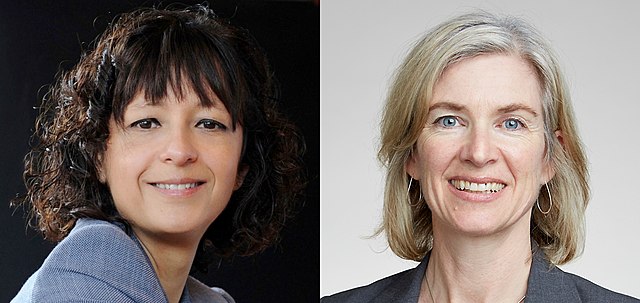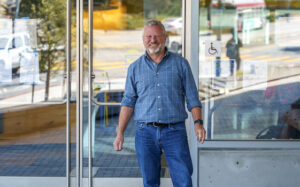In 2012, a revolutionary discovery a long time in the making made an appearance in both the media and the courtroom — a gene editing tool called CRISPR, or Clustered Regularly Interspaced Short Palindromic Repeat sequences.
At the time, this technology was seen as one with great potential for treating many health issues that stem from genetic mutations, but applying it to living organisms outside of the lab setting had not yet been done. Now, a whole decade later, more progress has been made on CRISPR’s real world applications while the battle over the legal rights to this technology rages on.
CRISPR is a gene-editing platform that can be used in the treatment of many genetic diseases, such as cancer, cystic fibrosis and more. According to the CRISPR therapeutics website, “CRISPR/Cas9 edits genes by precisely cutting DNA and then letting natural DNA repair processes take over. The system consists of two parts: the Cas9 enzyme and a guide RNA.” It can also be used to edit plant genomes in a way that allows them to withstand more extreme climates, which is becoming increasingly important due to climate change. CRISPR technologies do three main things: disrupt the gene sequence and deactivate the genes, delete the intervening sequence, and correct or replace a gene through homology directed repair.
Yoshizumi Ishino and his colleagues at Osaka University first came across clustered DNA repeats and hinted at the discovery in 1987, but the true medical and scientific benefits were not widely known until Jennifer Doudna, Emmanuelle Charpentier, Martin Jinek, Kyzsztof Chylinski, Feng Zhang, Virginijus Siksnys and many contributed to making the real-world applications of CRISPR possible starting around 2012. Their finding allows for gene-editing therapies to be much more efficient and simpler than they used to be.
The scientists who were behind this discovery fall into a few main groups. The first major party is Doudna, Charpentier, Jinek and Chylinski. They completed the research at the University of California, Berkeley and the University of Vienna, and are together referenced as the CVC (California, Vienna, Charpentier). The second major party involved is the Broad Institute, a group of scientists at Harvard University and the Massachusetts Institute of Technology (MIT) led by MIT professor and biochemist Feng Zhang. Finally, Siksnys of Vilnius University in Lithuania is a molecular biologist who has generally been left out of media coverage and the legal battle that ensued shortly after these publications. Apart from these people and groups, many other smaller labs have also been working on developing and using the technology.
Siksnys first started researching CRISPR all the way back in 2007 and sent in a report to be published around 2012, very close in time to when Doudna’s team submitted their report. The CVC report ended up being published earlier in a Science paper on June 28, 2012, and this is arguably the reason why they have received credit for the discovery.
Doudna is a Nobel Laureate in Chemistry and a Professor of Biochemistry, Biophysics and Structural Biology at UC Berkeley. Charpentier is a French professor and completed extensive research in microbiology, genetics and biochemistry, in addition to currently holding the title of Director at the Max Planck Institute for Infection Biology in Berlin. They were awarded a Nobel Prize in 2018 for their discovery, an especially significant accomplishment given that no two women had ever been awarded a Nobel Prize alone in the past.

photos courtesy of Wikimedia Commons
The Broad team worked mainly on CRISPR’s real world application and were able to successfully edit the genome of human and mouse cells. They submitted a report regarding this success to be published in Science about six months afterwards, on January 3, 2013. Meanwhile, Doudna and Charpentier as well as many other labs across the country were hard at work following up on their initial discovery and attempting to do the same thing themselves.
There is some controversy over the fact that Zhang was left off the Nobel Prize, and the fight over who has the legal and financial right to the discovery is still largely unresolved. Robert Sanders, the manager of science communications in the Media Relations office at UC Berkeley, described the case both sides made regarding who should receive credit for the discovery: “CVC argued that our original patent describing how to make CRISPR-Cas9 work in all environments laid out a clear path to making it work in eukaryotes, and that the Broad scientists would not have been first if they had not gotten an early peek at Doudna’s data on CRISPR-Cas9. The Broad argued that this was irrelevant, because the initial CVC and Broad provisional patent filings were done under the old United States ‘first to invent’ patent rules, and the Broad achieved editing in eukaryotes first.” The application of CRISPR to eukaryotic cells makes it a viable option to be used in medical treatments.
This legal battle has been blazing since the initial patent application submission made by Berkeley all the way back in 2012. The most recent development of the case occurred at the beginning of this year, on February 4, at the US Patent and Trademark Office, and was initiated by the US Patent and Trade Office. At this point, the whole argument boils down to one thing: if the CVC’s initial publication set the groundwork for applying CRISPR to eukaryotic cells but the Broad institute achieved it first in practice, who deserves all the money that comes from other labs and medical institutes licensing the technology? This is a big question considering that many drugs like the ones CRISPR could produce generate annual revenues in the tens of billions of dollars.
The CVC and Broad attorneys Eldora Ellison and Raymond Nimrod went head-to-head in front of the Patent Trial and Appeal board, endlessly comparing the importance of knowing the technology existed and was applicable to actually being able to execute its application. This proceeding resulted in no decision or opinion being issued.
One of the big questions that this discovery and battle has brought up is the efficacy of the patent system. The CVC team discovered how to utilize CRISPR in a lab setting and submitted a patent application for that before their initial publication, but the level of specificity in those documents makes some believe that the Broad Institute could potentially claim the rights to the application of the technology in animal and human cells because they physically applied it in a lab first. A few general rules of patents are that you cannot patent nature, and you cannot patent a substance or idea without directive — some sort of field of application.
In response to this case, Julia Schaletzky, the Executive Director of the Center for Emerging and Neglected Diseases and Drug Discovery Center, questioned the capability of the patent system to handle such complex scientific discoveries. “I’m honestly wondering if the patent system is equipped to handle really, really complicated cases like this where the information and fact finding has taken years, and it’s ultimately determined by who did what first and who filed what when,” she said.
The CVC does not have the right to CRISPR if it were to be applied to a whole other field of science, so the legal battle is really just determining the range that the initial patent holds and if the knowledge that something is possible or actually acting upon that knowledge successfully is seen as more important in a courtroom.
While the patent battle is very interesting and raises very important questions about how collaborative scientific discoveries should be claimed legally and rewarded financially, the potential medical and environmental benefits are much more important in the long term.
According to Sanders, some of the most important indications of the discovery are “new gene therapies, new variants of plants that can withstand climate change, new discoveries in the lab made possible by CRISPR.” Schaletzky described how this technology can allow doctors to customize gene therapies to the patient, because there are some diseases where everyone has a different mutation that needs to be fixed and CRISPR could make that a lot easier.
Schaletzky also talked about another important benefit. “There’s a big effect of CRISPR in that it really accelerates timelines, because you can generate your tools faster and then you can ask the scientific question faster. And you also have the ability to knock out every gene in the genome, and that was very difficult before.”
CRISPR Therapeutics is a biotech company that was founded by Charpentier in 2013 and is based in Switzerland and the US. This organization’s main programs currently consist of Hemoglobinopathies, Immuno-Oncology, Regenerative Medicine, In Vivo Approaches, and more. Most of these programs are still being researched farther and are undergoing clinical trials but will hopefully be on the market soon.
Another potential application of CRISPR is less important in the present day, but still could be very relevant to life in the future. He Jiankui, a scientist in China, attempted to edit the genomes of twin girls in 2018 and prevent them from having Human Immunodeficiency Virus (HIV). This caused a large scandal and could potentially lead to He spending three to ten years in prison depending on what happens to the children, as he failed to follow the standard procedures and complete safety testing. Because of this, the edits he made to the girls’ genome could have other health consequences. When used properly, CRISPR has the potential to be used to do anything from preventing a baby from having a disease such as HIV (safely), or for something more surface level such as changing the color of their hair.
The most important thing to focus on is that CRISPR is going to have a large impact on the world of medicine, and that it could make what were previously extremely complicated genes therapies much simpler and easier to customize for each patient.






